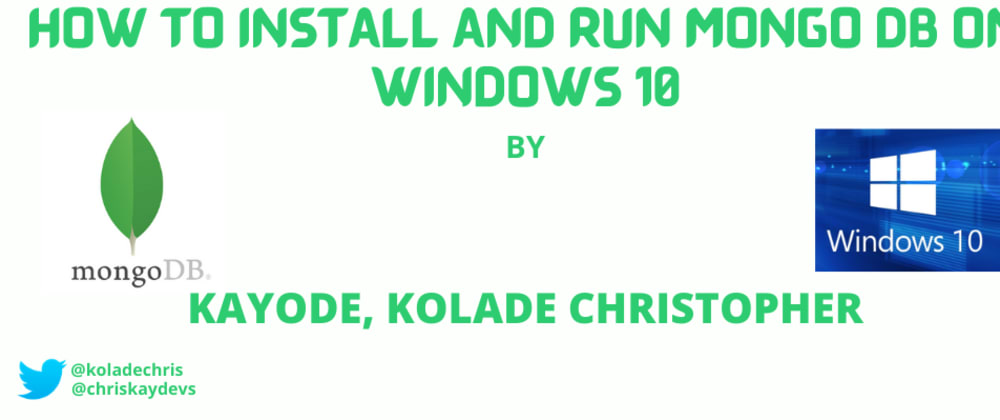
- #Mongodb install but mongo command not working how to#
- #Mongodb install but mongo command not working install#
- #Mongodb install but mongo command not working full#
- #Mongodb install but mongo command not working portable#
- #Mongodb install but mongo command not working software#
Next, we need to create a directory called “mongodb” to hold the docker-compose file. The search results show us that an official MongoDB container image called mongo exists in the docker container registry.īy default, the MongoDB container stores the databases within the /data/db directory within the container.
#Mongodb install but mongo command not working how to#
This section will cover how to set up a MongoDB container using a Docker Compose file.īefore creating the compose file, let’s search for the official MongoDB container image using the search command. Verify the Docker Compose installation.>sudo chmod +x /usr/local/bin/docker-compose Apply executable permissions for the downloaded binary.Sudo curl -L "$(uname -s)-$(uname -m)" -o /usr/local/bin/docker-compose
#Mongodb install but mongo command not working install#
#Mongodb install but mongo command not working portable#
Setting up MongoDB as a container allows the user to create a portable and extensible NoSQL database. These containers can be run on any server platform regardless of the underlying configuration or hardware structure.ĭocker can be used to run MongoDB instances.

#Mongodb install but mongo command not working software#
A container is a standard unit of software that can be used to package applications and all the dependencies to a single package. Use the right-hand menu to navigate.) Docker containers & MongoDBĭocker is a tool to create, deploy, and run applications using containers easily. (This article is part of our MongoDB Guide. So, we’ll create a self-containing project with a MongoDB instance and Mongo Express web interface on a dedicated network and docker volume to maximize the portability of the project. These can give you a glimpse of the extensibility of a containerized project. The last part of this tutorial will look at advanced configurations.


And containers offer easy app usage and scalability. Specify a target database to restore into - if the target database doesn't exist one will be created.MongoDB is among the most popular NoSQL databases today.
#Mongodb install but mongo command not working full#
Using the -drop option will clear any existing collections, effectively performing a full restore.

It's worth noting that by default the mongorestore command will only perform inserts and not updates when restoring data - any existing data in the target database will be left intact. The restoration procedure will drop every collection from the target database before restoring the data from the dumped backup. Options used with the above command -drop The path to the directory containing the backup you made using mongodumpĪn instance of MongoDB running on the machine the command is run on. I use the following command to backup a production/live database and restore it to my local development machine - the command assumes the following: Once you have created a backup of the database you wish to restore using the mongodump command - the mongorestore command is used to restore the database. MongoDB comes with two commands that allow you to quickly backup( mongodump) and restore( mongorestore) to your running MongoDB instances. As a Developer working with MongoDB a regular task I perform is backing up a production/live database and restoring it to my local development machine.


 0 kommentar(er)
0 kommentar(er)
